Abstract
Nanosecond time-resolved magnetic circular dichroism (TRMCD) and time-resolved natural circular dichroism (TRCD) measurements of photolysis products of the CO complex of eukaryotic cytochrome c oxidase (CcO-CO) are presented. TRMCD spectra obtained at 100 ns and 10 microseconds after photolysis are diagnostic of pentacoordinate cytochrome a3Fe2+, as would be expected for simple photodissociation. Other time-resolved spectroscopies (UV-visible and resonance Raman), however, show evidence for unusual Fea3(2+) coordination after CO photolysis (Woodruff, W. H., O. Einarsdóttir, R. B. Dyer, K. A. Bagley, G. Palmer, S. J. Atherton, R. A. Goldbeck, T. D. Dawes, and D. S. Kliger. 1991. Proc. Nat. Acad. Sci. U.S.A. 88:2588-2592). Furthermore, time-resolved IR experiments have shown that photodissociated CO binds to CuB+ prior to recombining with Fea3(2+) (Dyer, R. B., O. Einarsdóttir, P. M. Killough, J. J. López-Garriga, and W. H. Woodruff. 1989. J. Am. Chem. Soc. 111:7657-7659). A model of the CcO-CO photolysis cycle which is consistent with all of the spectroscopic results is presented. A novel feature of this model is the coordination of a ligand endogenous to the protein to the Fe axial site vacated by the photolyzed CO and the simultaneous breaking of the Fe-imidazole(histidine) bond.
Full text
PDF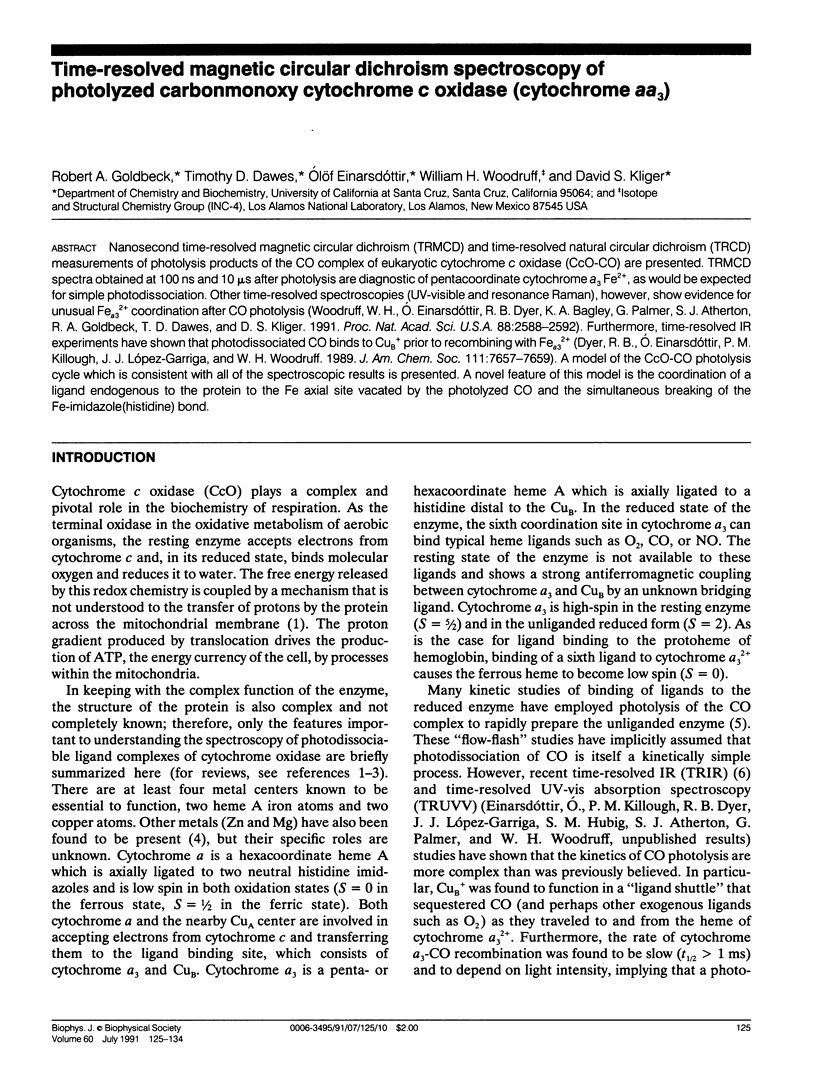
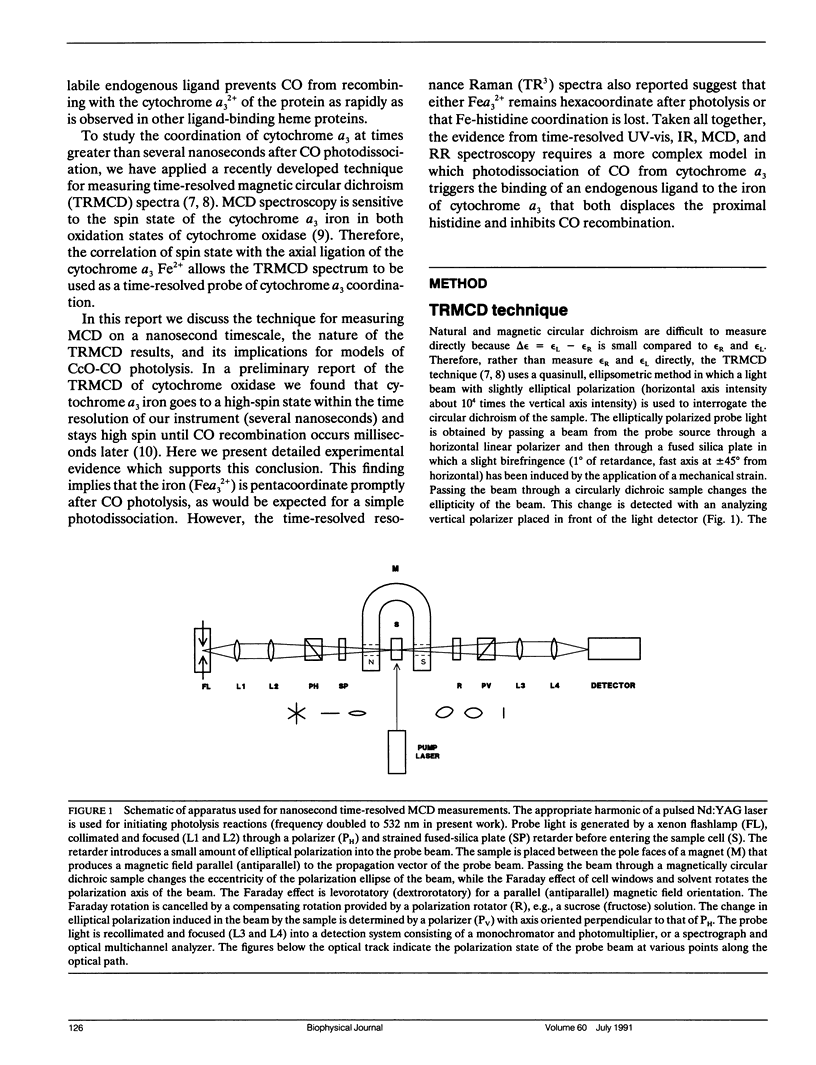
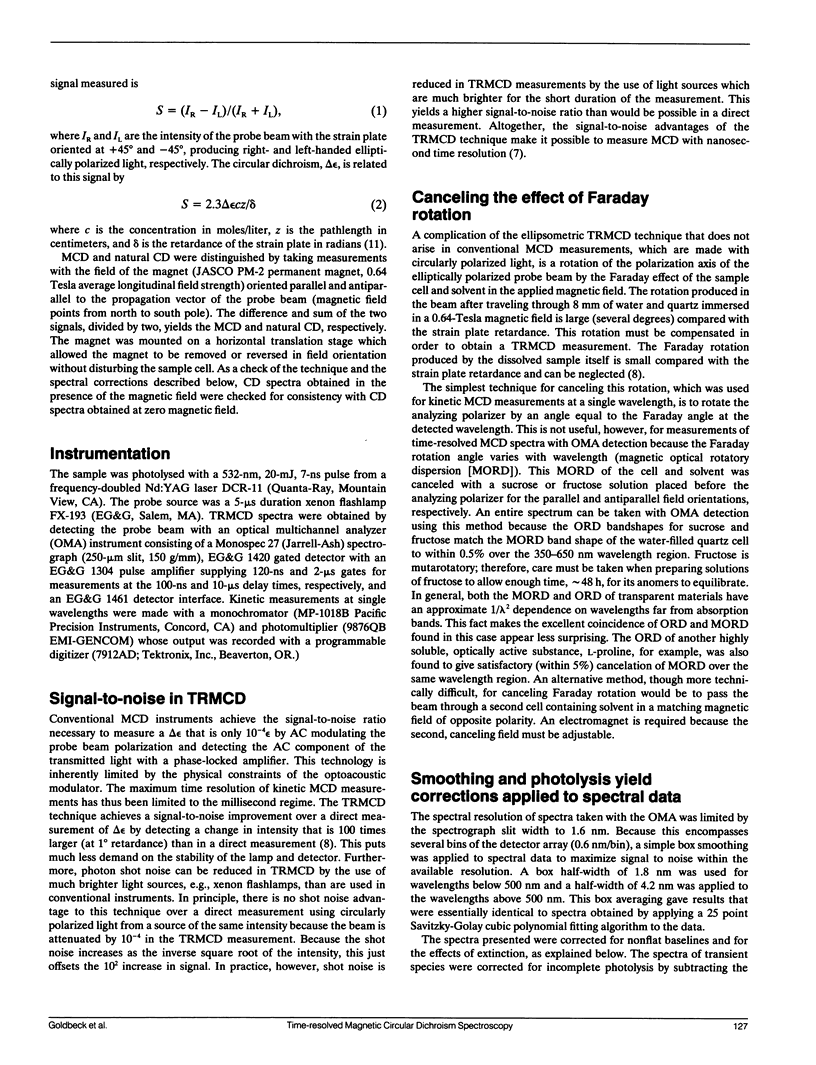
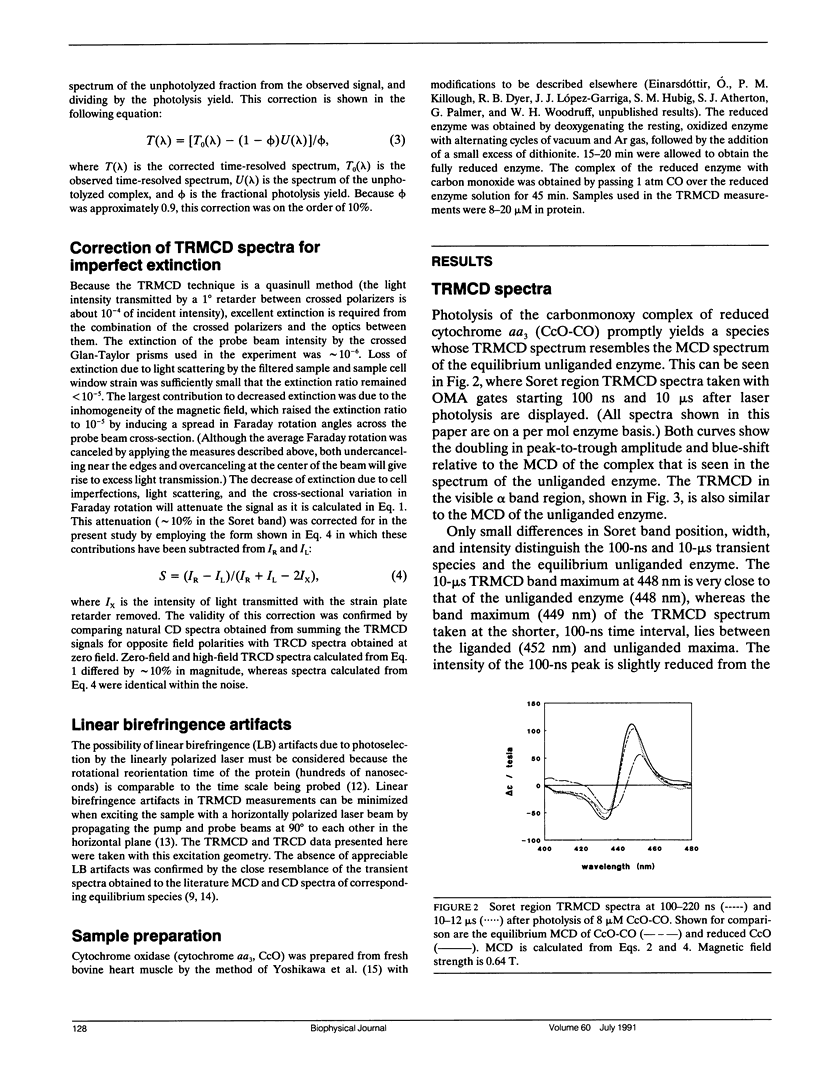
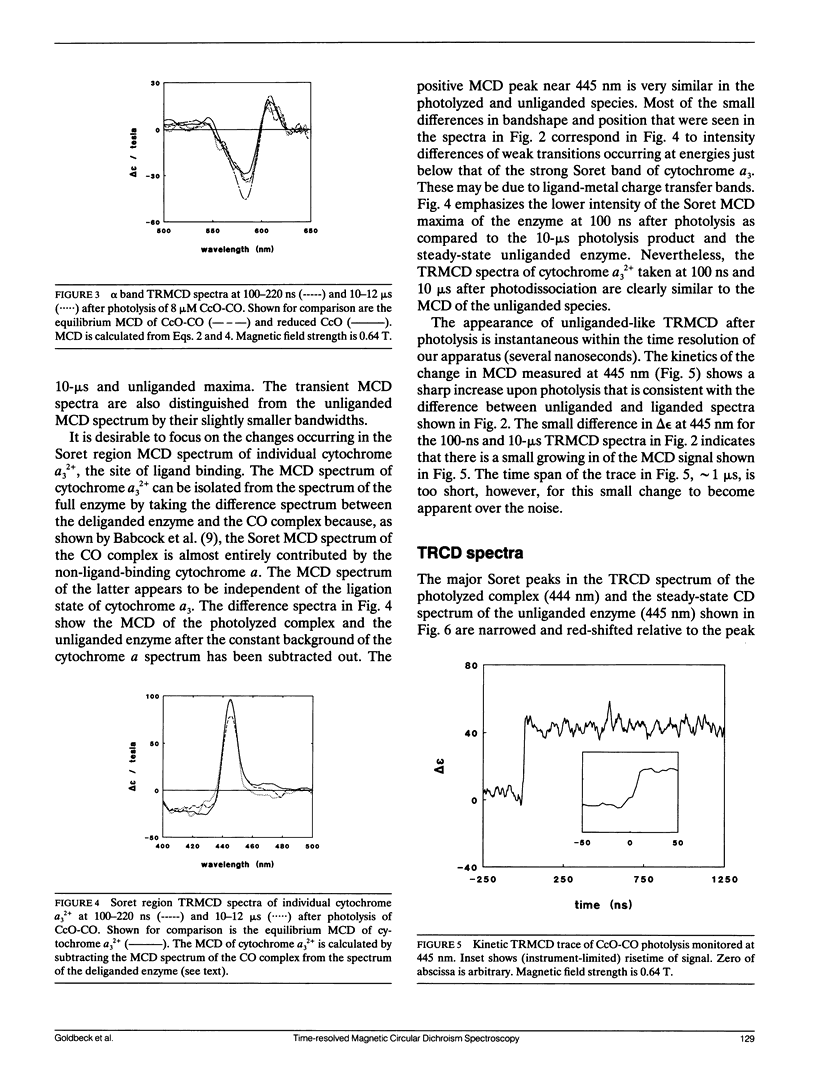
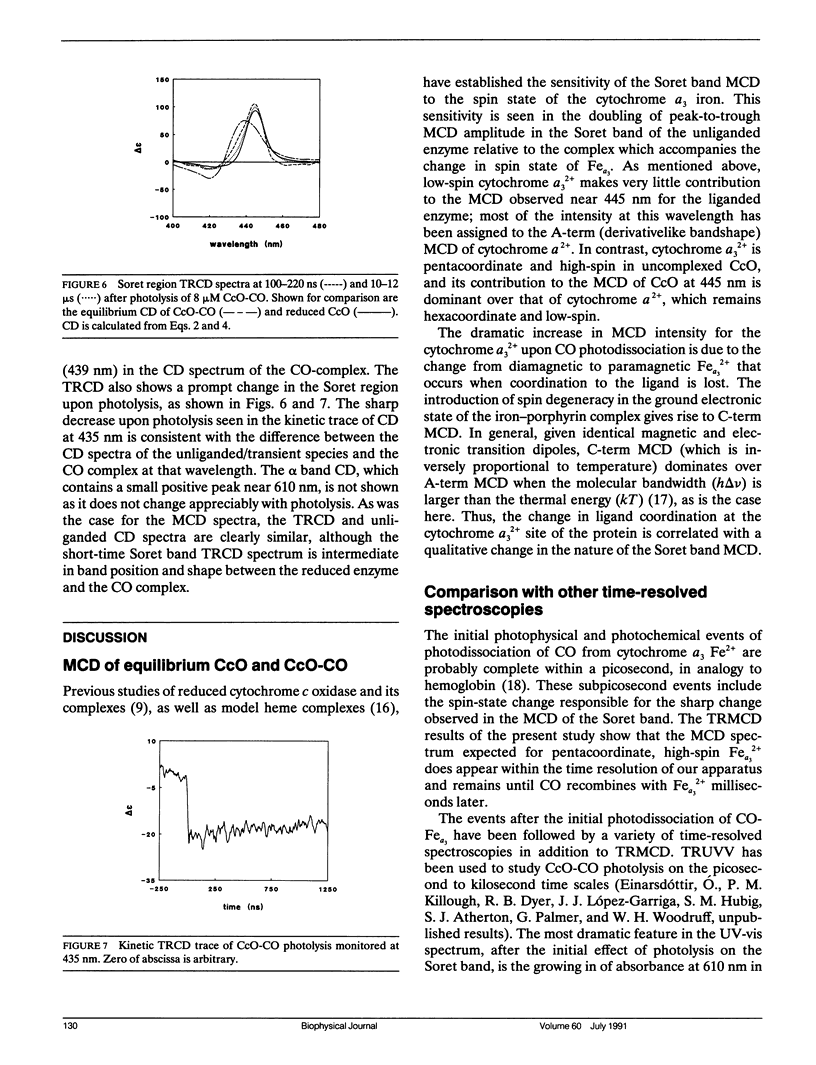
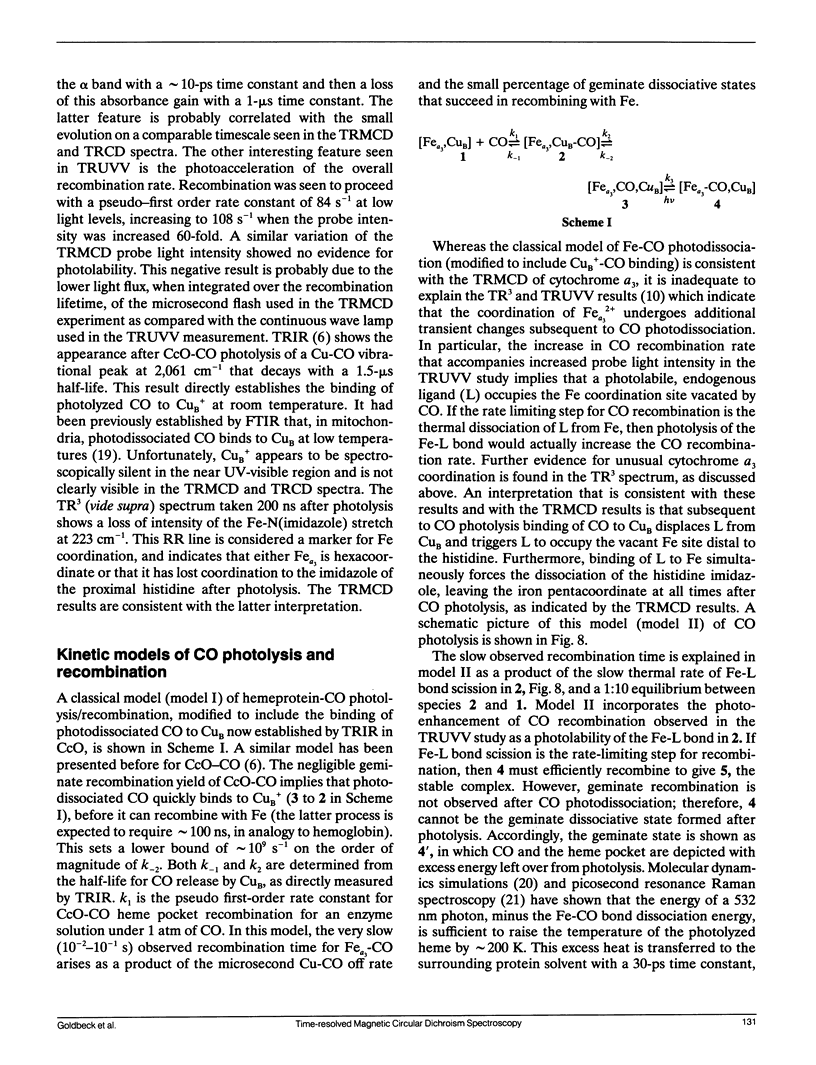
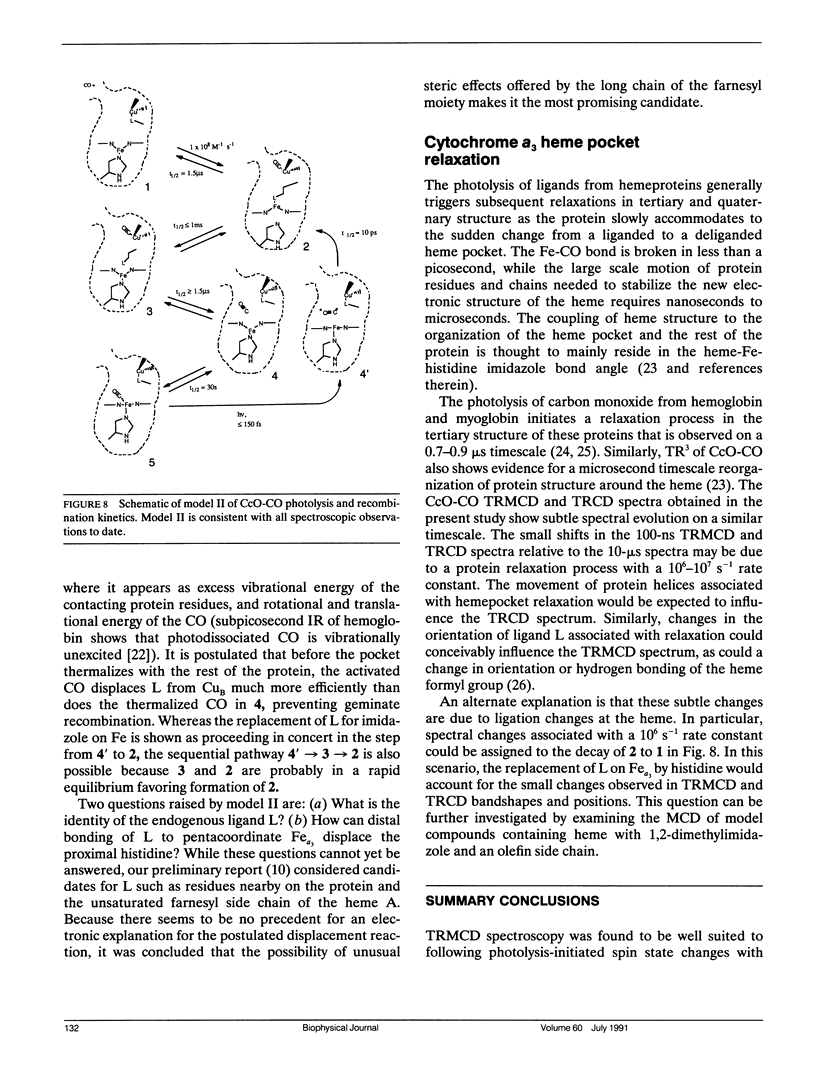
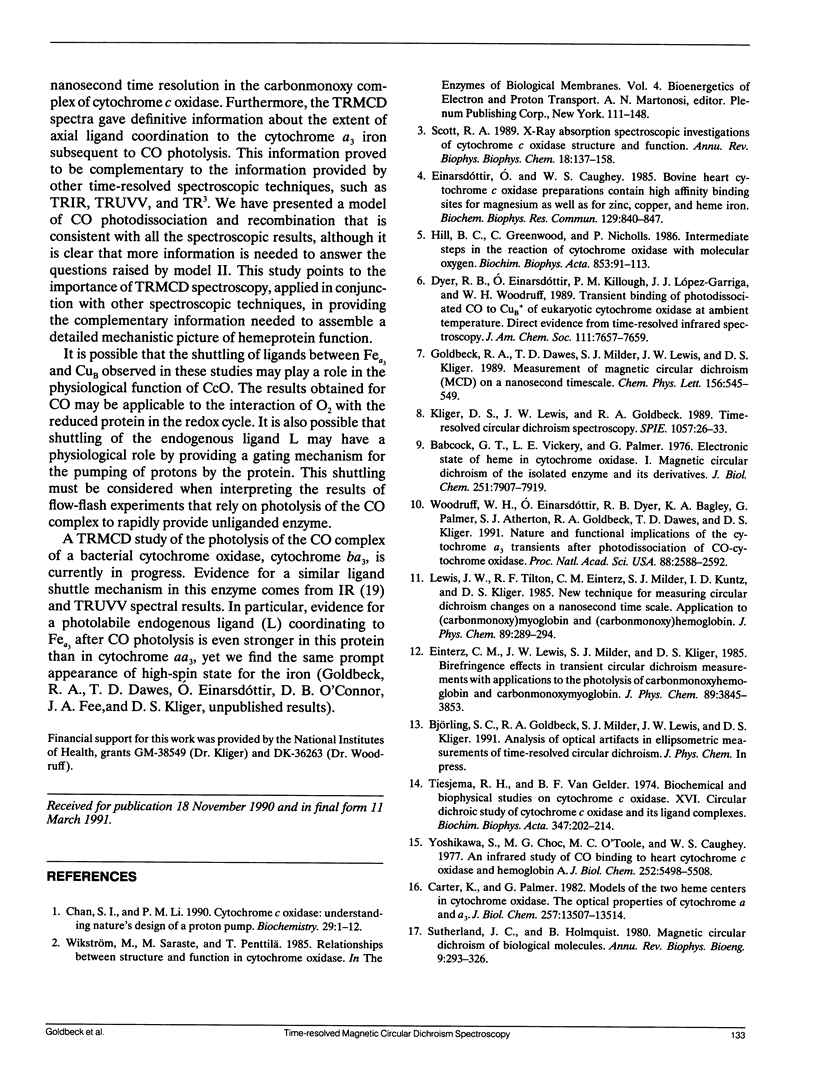
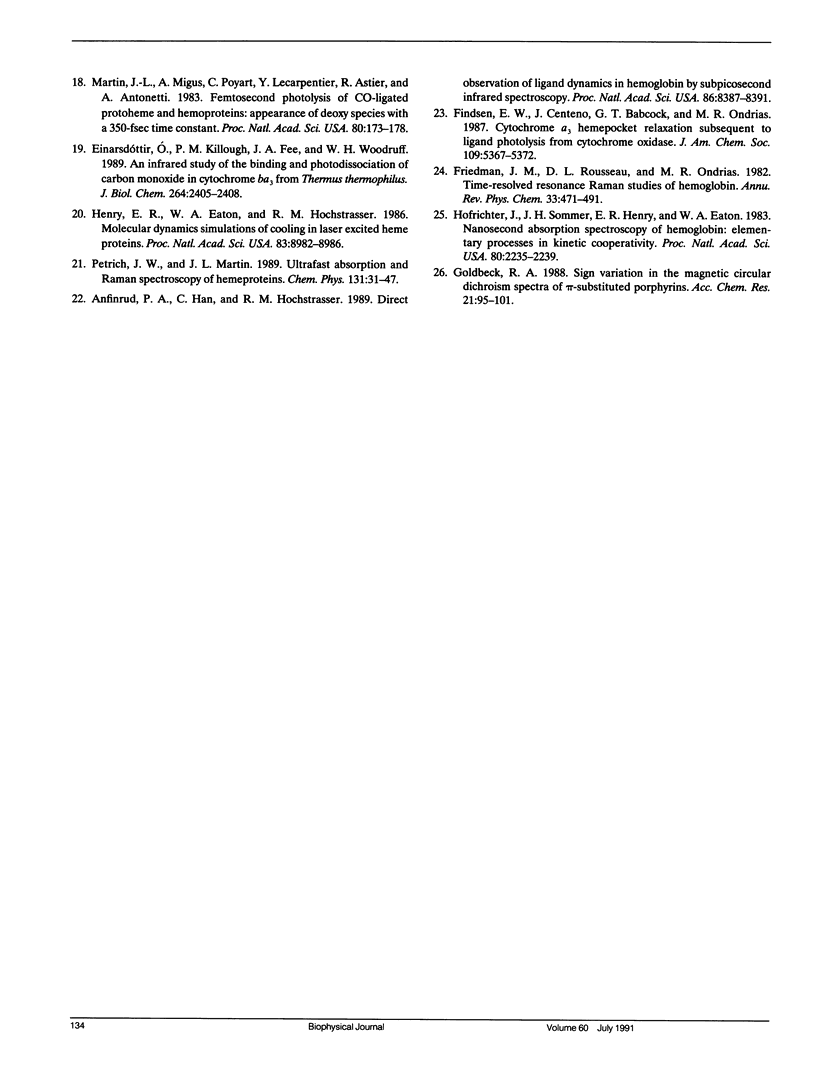
Selected References
These references are in PubMed. This may not be the complete list of references from this article.
- Anfinrud P. A., Han C., Hochstrasser R. M. Direct observations of ligand dynamics in hemoglobin by subpicosecond infrared spectroscopy. Proc Natl Acad Sci U S A. 1989 Nov;86(21):8387–8391. doi: 10.1073/pnas.86.21.8387. [DOI] [PMC free article] [PubMed] [Google Scholar]
- Babcock G. T., Vickery L. E., Palmer G. Electronic state of heme in cytochrome oxidase. I. Magnetic circular dichroism of the isolated enzyme and its derivatives. J Biol Chem. 1976 Dec 25;251(24):7907–7919. [PubMed] [Google Scholar]
- Carter K., Palmer G. Models of the two heme centers in cytochrome oxidase. The optical properties of cytochrome a and a3. J Biol Chem. 1982 Nov 25;257(22):13507–13514. [PubMed] [Google Scholar]
- Chan S. I., Li P. M. Cytochrome c oxidase: understanding nature's design of a proton pump. Biochemistry. 1990 Jan 9;29(1):1–12. doi: 10.1021/bi00453a001. [DOI] [PubMed] [Google Scholar]
- Einarsdóttir O., Caughey W. S. Bovine heart cytochrome c oxidase preparations contain high affinity binding sites for magnesium as well as for zinc, copper, and heme iron. Biochem Biophys Res Commun. 1985 Jun 28;129(3):840–847. doi: 10.1016/0006-291x(85)91968-0. [DOI] [PubMed] [Google Scholar]
- Einarsdóttir O., Killough P. M., Fee J. A., Woodruff W. H. An infrared study of the binding and photodissociation of carbon monoxide in cytochrome ba3 from Thermus thermophilus. J Biol Chem. 1989 Feb 15;264(5):2405–2408. [PubMed] [Google Scholar]
- Henry E. R., Eaton W. A., Hochstrasser R. M. Molecular dynamics simulations of cooling in laser-excited heme proteins. Proc Natl Acad Sci U S A. 1986 Dec;83(23):8982–8986. doi: 10.1073/pnas.83.23.8982. [DOI] [PMC free article] [PubMed] [Google Scholar]
- Hill B. C., Greenwood C., Nicholls P. Intermediate steps in the reaction of cytochrome oxidase with molecular oxygen. Biochim Biophys Acta. 1986;853(2):91–113. doi: 10.1016/0304-4173(86)90006-6. [DOI] [PubMed] [Google Scholar]
- Hofrichter J., Sommer J. H., Henry E. R., Eaton W. A. Nanosecond absorption spectroscopy of hemoglobin: elementary processes in kinetic cooperativity. Proc Natl Acad Sci U S A. 1983 Apr;80(8):2235–2239. doi: 10.1073/pnas.80.8.2235. [DOI] [PMC free article] [PubMed] [Google Scholar]
- Martin J. L., Migus A., Poyart C., Lecarpentier Y., Astier R., Antonetti A. Femtosecond photolysis of CO-ligated protoheme and hemoproteins: appearance of deoxy species with a 350-fsec time constant. Proc Natl Acad Sci U S A. 1983 Jan;80(1):173–177. doi: 10.1073/pnas.80.1.173. [DOI] [PMC free article] [PubMed] [Google Scholar]
- Scott R. A. X-ray absorption spectroscopic investigations of cytochrome c oxidase structure and function. Annu Rev Biophys Biophys Chem. 1989;18:137–158. doi: 10.1146/annurev.bb.18.060189.001033. [DOI] [PubMed] [Google Scholar]
- Sutherland J. C., Holmquist B. Magnetic circular dichroism of biological molecules. Annu Rev Biophys Bioeng. 1980;9:293–326. doi: 10.1146/annurev.bb.09.060180.001453. [DOI] [PubMed] [Google Scholar]
- Tiesjema R. H., van Gelder B. F. Biochemical and biophysical studies on cytochrome c oxidase. XVI. Circular dichroic study of cytochrome c oxidase and its ligand complexes. Biochim Biophys Acta. 1974 May 22;347(2):202–214. doi: 10.1016/0005-2728(74)90045-0. [DOI] [PubMed] [Google Scholar]
- Woodruff W. H., Einarsdóttir O., Dyer R. B., Bagley K. A., Palmer G., Atherton S. J., Goldbeck R. A., Dawes T. D., Kliger D. S. Nature and functional implications of the cytochrome a3 transients after photodissociation of CO-cytochrome oxidase. Proc Natl Acad Sci U S A. 1991 Mar 15;88(6):2588–2592. doi: 10.1073/pnas.88.6.2588. [DOI] [PMC free article] [PubMed] [Google Scholar]
- Yoshikawa S., Choc M. G., O'Toole M. C., Caughey W. S. An infrared study of CO binding to heart cytochrome c oxidase and hemoglobin A. Implications re O2 reactions. J Biol Chem. 1977 Aug 10;252(15):5498–5508. [PubMed] [Google Scholar]


